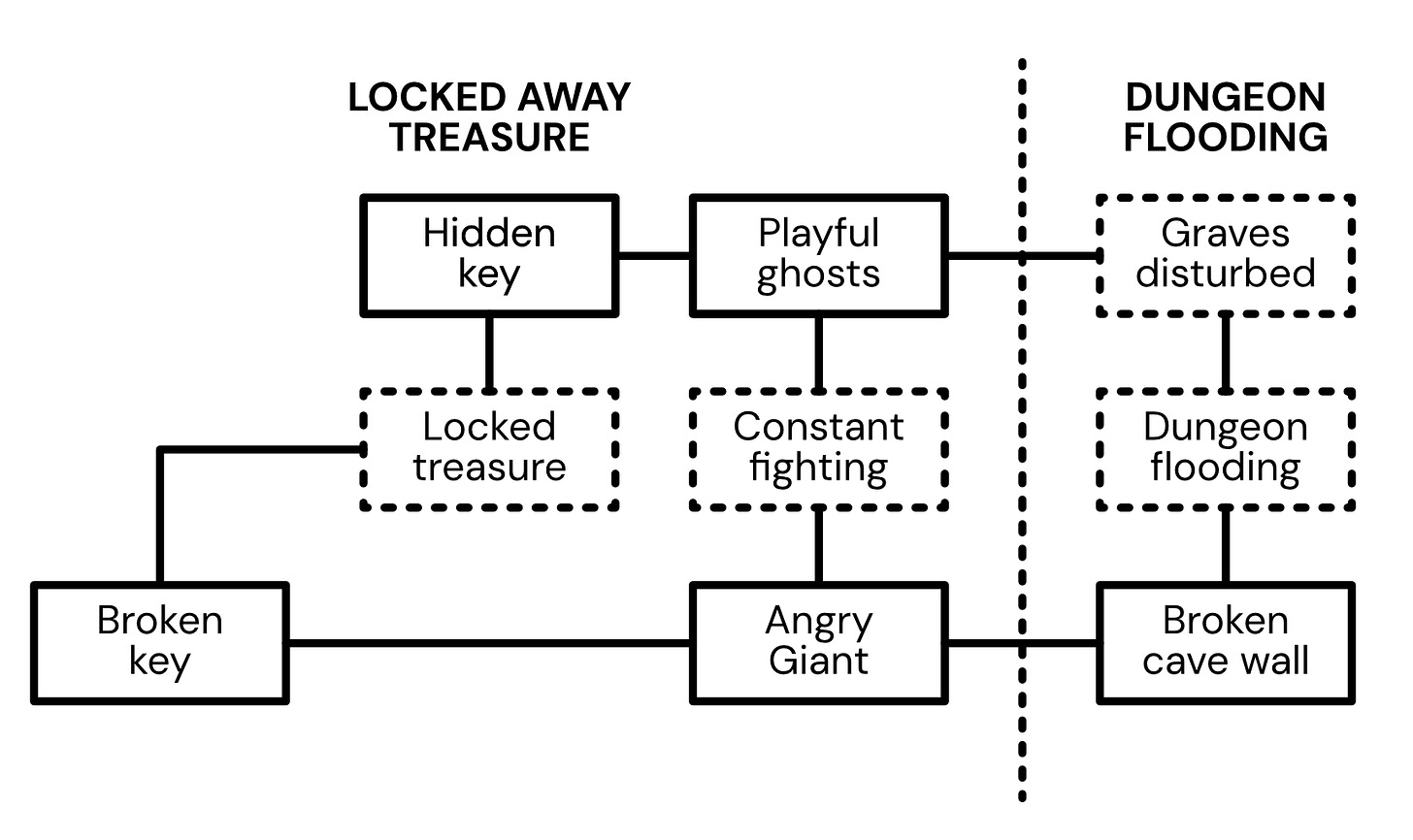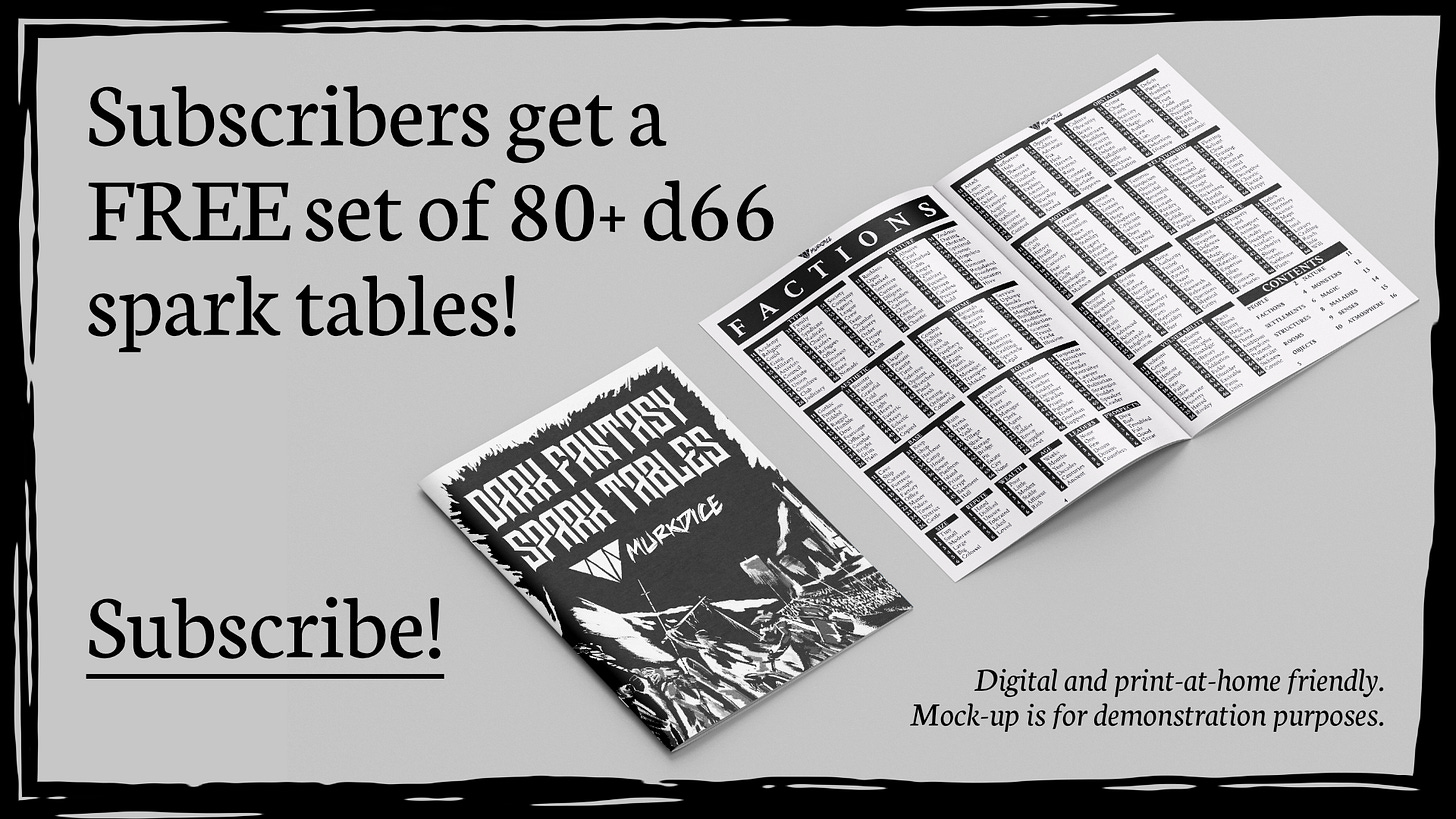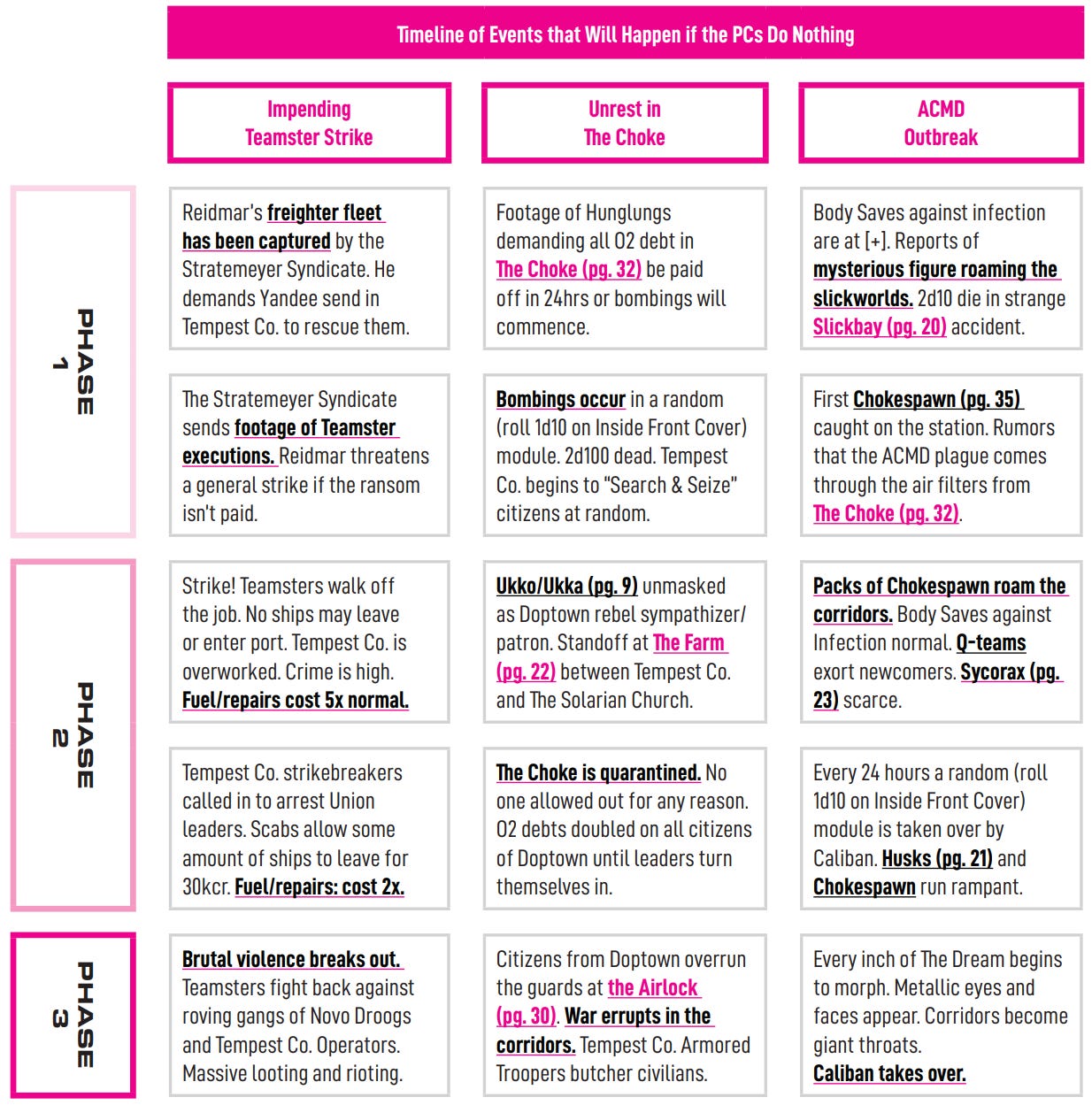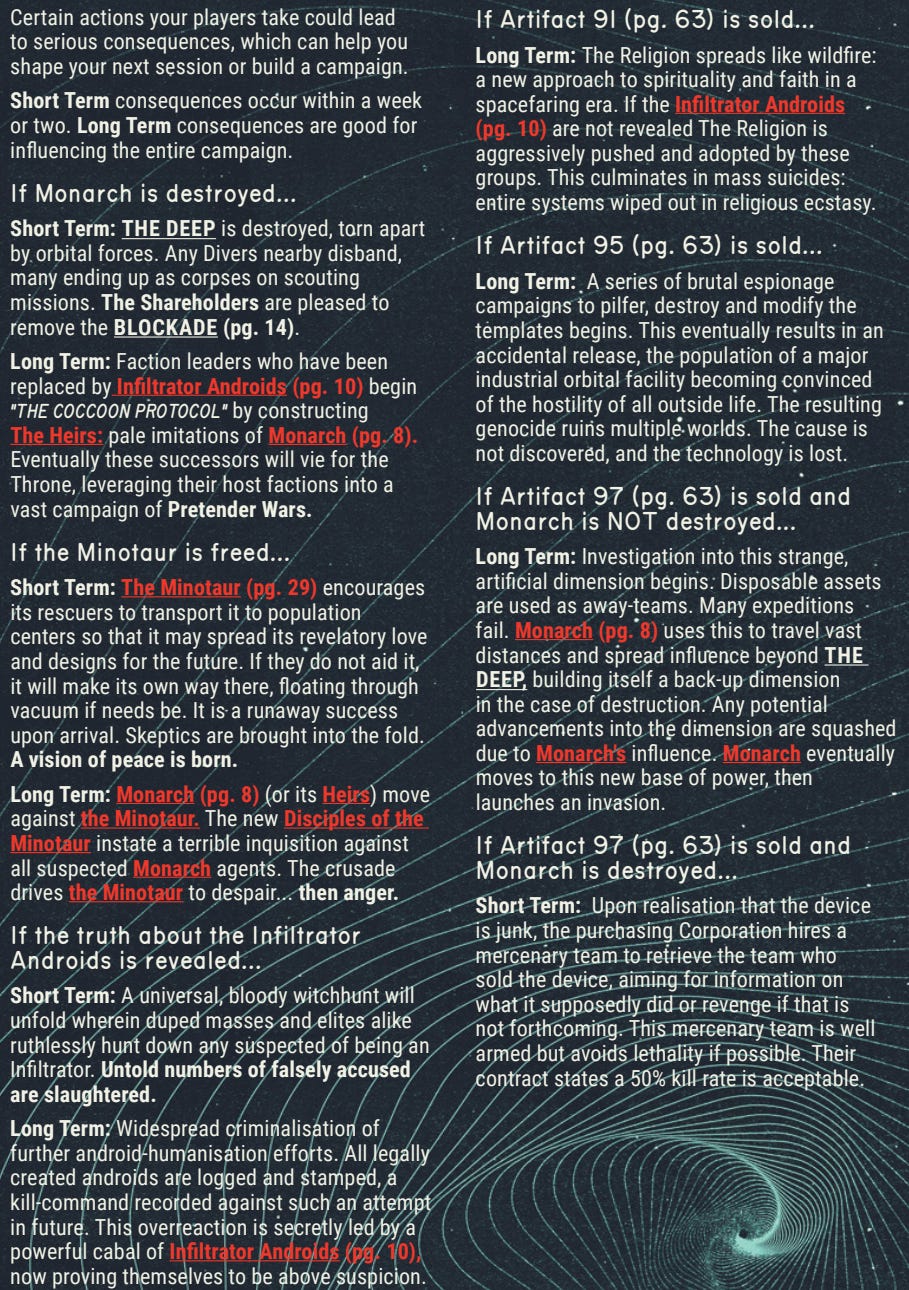Timelines and Choices
Structuring player action impact
This article contains affiliate links, meaning I get a commission if you make purchases using these links, at no cost to you.One of the best things we can do to make a scenario feel alive, is to evolve it. In our article on hyperclusters, we looked at mapping scenarios using diagrams. We used this example of a dungeon:
This is a snapshot in time, the starting conditions of the scenario. Sometimes, when we run our own games or modules, the starting situation is the only thing we write. To have the scenario evolve, we need some machinery.
Now, we don’t want to go so far with prep that we end up with a ‘choose your own adventure’ sort of thing. To keep it flexible and simple, I think it’s helpful to know two things to have the scenario evolve:
How the situation evolves without player action (timeline).
How some key player choices might effect the situation (if-statements).
I think point 1 is pretty well established. Knowing how things would otherwise play out is a great reference point for deciding how player actions influence things.
Point 2 is perhaps more controversial. Some folks may worry this is pre-planning the ways in which players can interact with the world. That’s why we’ll paint in broad strokes, so it’s a guide and not a mandate.
Timeline
Two things that we could evolve from the scenario mapped above are 1) flooding of the dungeon and 2) fighting between the two factions. Here’s two four-step timelines we could use.
Flooding
The lower floor of the dungeon is half submerged.
The lower floor is fully submerged. The giant climbs to the upper level.
The upper floor is partially submerged. The giant leaves the dungeon.
The water spills out of the dungeon, with the corpses from the disturbed graves. This means the ghosts will wander and affect the wider world.
Faction fighting
The ghosts and giant get into a fight, damaging the environment further.
The ghosts get the drop on the giant, injuring him. This prevents him repairing the cave wall, unless he is healed.
The giant hides, trying to buy himself time.
The ghosts regroup and slay the giant whilst he is wounded.
Note the overlap: If the giant has left the dungeon, the ghosts cannot harm him - unless their corpses have reached the surface.
We can manage the progression of these timelines through classic time tracking, die rolls (e.g. a check once per watch to see which timeline advances), or just good ‘ol GM judgement. Whatever suits.
A great example of a multi-track timeline is in A Pound of Flesh:
Player choices
We can predict some obvious player choices that might come up but we aren’t psychic. We’ll structure them as simple ‘if-statements’: if A happens, then B happens.
You should modify these statements accordingly for different player actions, or use them as a basis to improvise for other choices they might make. Some examples for this scenario:
If the players help the injured giant or destroy the ghosts… the giant will help them repair the broken cave wall.
If the players restore the graves or kill the giant… the ghosts will tell them where they hid the key. If they restore the graves, they will then disperse.
If the players convince the giant to restore the graves… the giant and ghosts will be at peace with each other and both help the players.
We can update timelines and if-statements as players do stuff. If they fix the cave wall themselves, then help the giant, how does he reward them?
You can see this if-statement structure in Gradient Descent:
Layers
You can scale this up to longer timelines and cover more player choices: make a timeline and choice set for for a whole sandbox that you update more dynamically.
Example: for a ‘wider world’ timeline, you could have a point at which this dungeon floods out and the ghosts are released. If players go to the dungeon, it’s entirely flooded already. That’s a fun event for your sandbox (you could put it in a sandbox event table too).
Recommendation
I came across this really neat PWYW Hauler’s Handbook trifold supplement for Mothership! It’s got tables of cargo, delivery locations, distances, and complications which are a solid basis for little cargo jobs between more detailed scenarios.







Picked up the Hauler's Handbook, good stuff! Thanks for the article and the suggestion!
a slight change of scenario would warrant calling it "timelines" in ttrpgs framework? it is the butterfly effect in principle but this version feels like is just train tracks of a splitting railroad method. trying to predict the future it is pruning all the other versions that could emerge from improvisation, funnily enough.